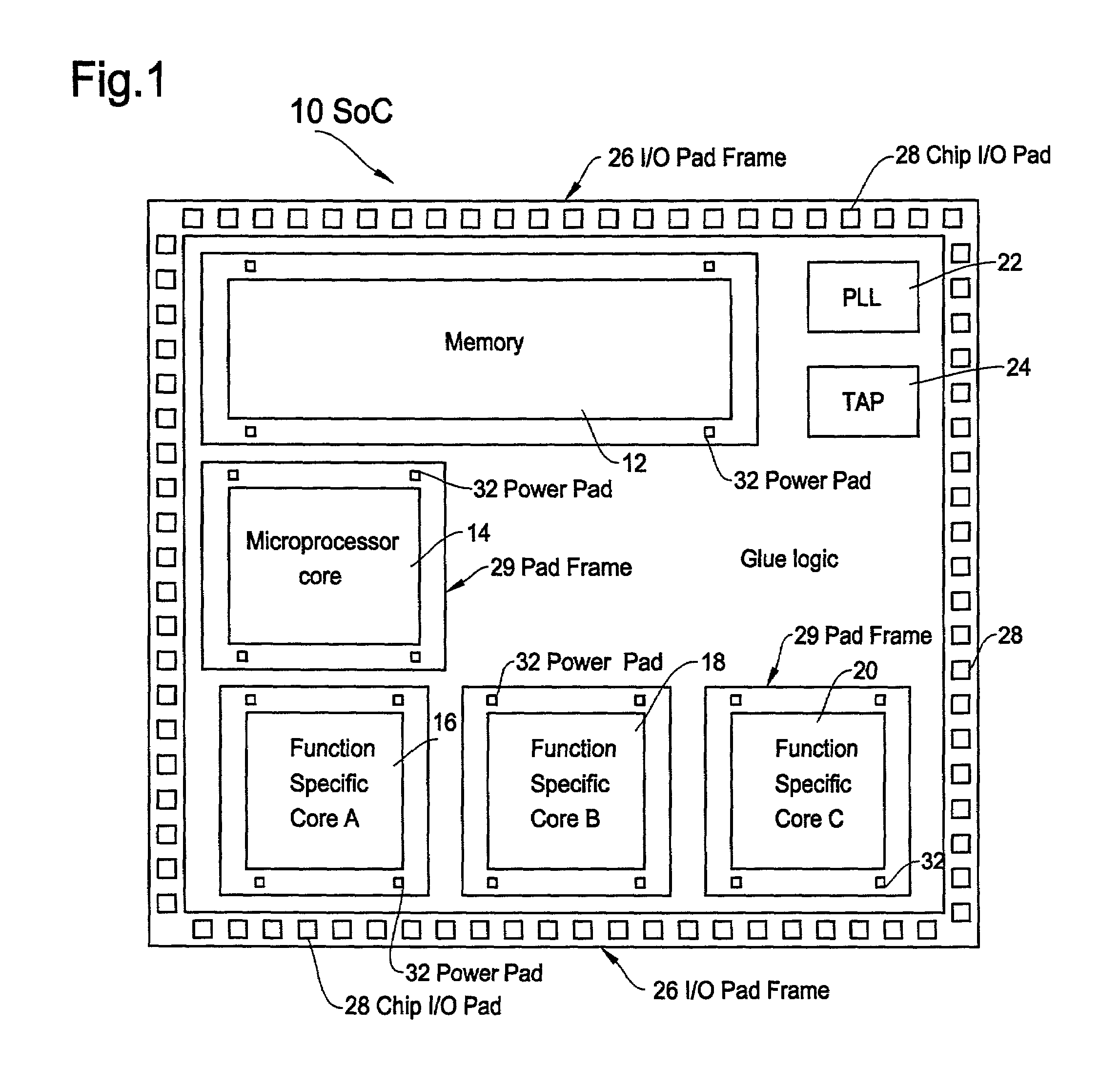Method for design validation of complex IC
a design validation and complex technology, applied in the field of complex design validation, can solve the problems of slow simulation speed, high cost of emulation, and almost impossible chip level design validation, and achieve the effect of reducing cos
- Summary
- Abstract
- Description
- Claims
- Application Information
AI Technical Summary
Benefits of technology
Problems solved by technology
Method used
Image
Examples
Embodiment Construction
[0041]In the previous applications owned by the same assignee of this invention, an event based test system is described in U.S. patent application Ser. No. 09 / 406,300 (now U.S. Pat. No. 6,532,561) and Ser. No. 09 / 340,371 (now U.S. Pat. No. 6,678,643) “Event based semiconductor test system” and an event based design validation station is described in U.S. patent application Ser. No. 09 / 428,746 (now U.S. Pat. No. 6,678,645) “Method and apparatus for SoC design validation”. Further, a time scaling technology is described in U.S. patent application Ser. No. 09 / 286,226 (now U.S. Pat. No. 6,557,133) “Scaling logic for Event Based Test System”. All of these patent applications are incorporated by reference.
[0042]In the present invention, the inventors provide a concept for IC design verification method using the event based test system. More specifically, in the first embodiment, a method is described for design verification with silicon prototype, and in the second embodiment, a method i...
PUM
 Login to View More
Login to View More Abstract
Description
Claims
Application Information
 Login to View More
Login to View More - R&D
- Intellectual Property
- Life Sciences
- Materials
- Tech Scout
- Unparalleled Data Quality
- Higher Quality Content
- 60% Fewer Hallucinations
Browse by: Latest US Patents, China's latest patents, Technical Efficacy Thesaurus, Application Domain, Technology Topic, Popular Technical Reports.
© 2025 PatSnap. All rights reserved.Legal|Privacy policy|Modern Slavery Act Transparency Statement|Sitemap|About US| Contact US: help@patsnap.com



